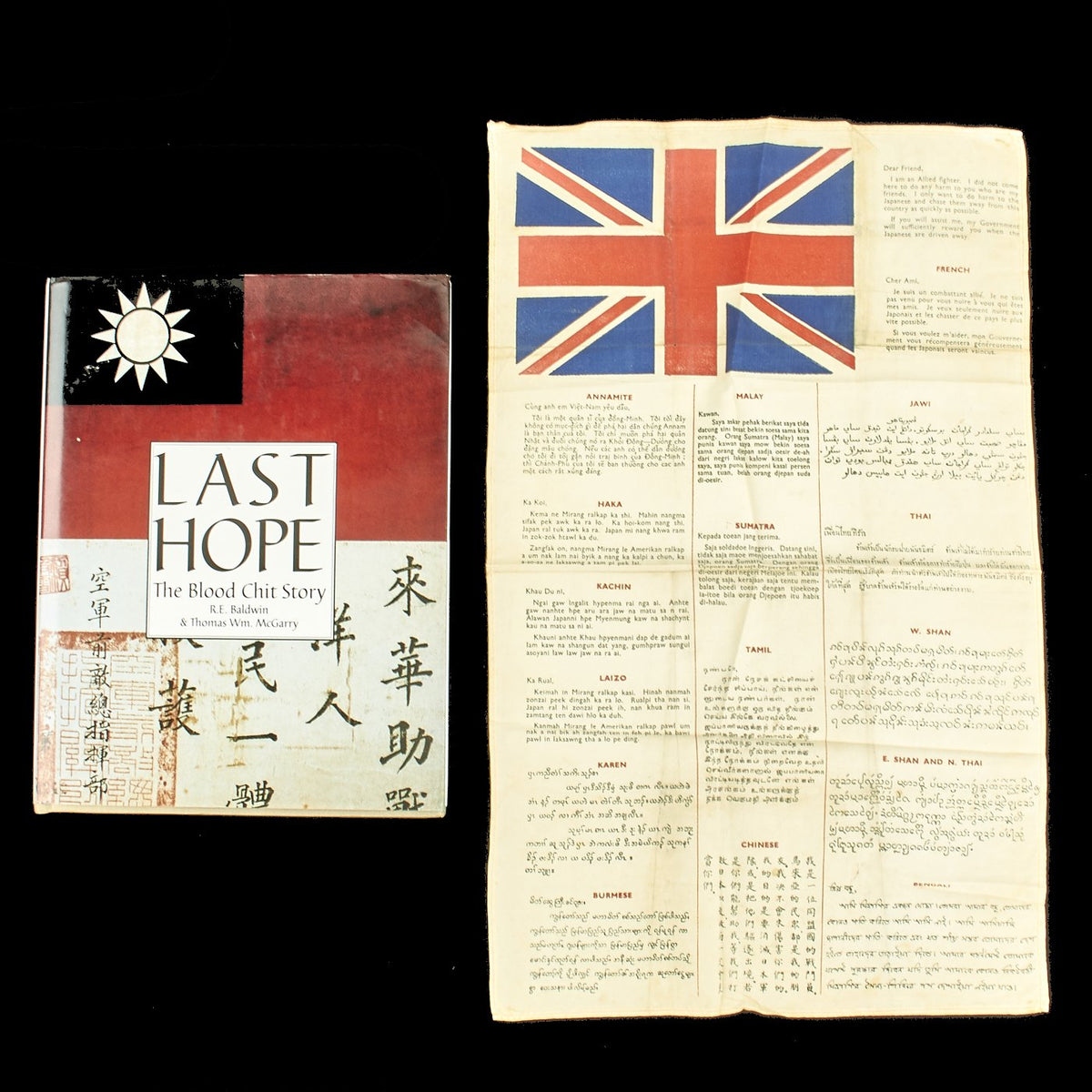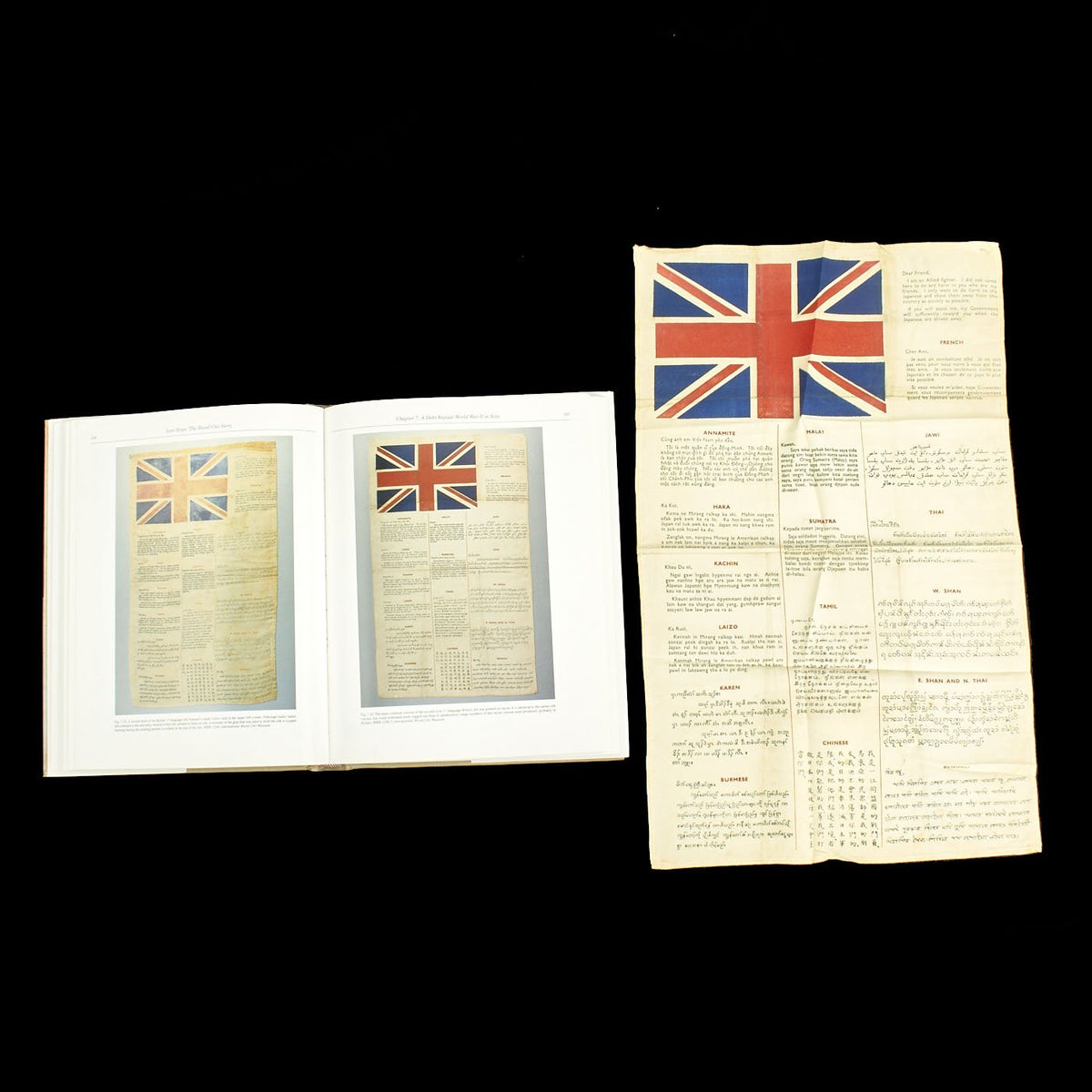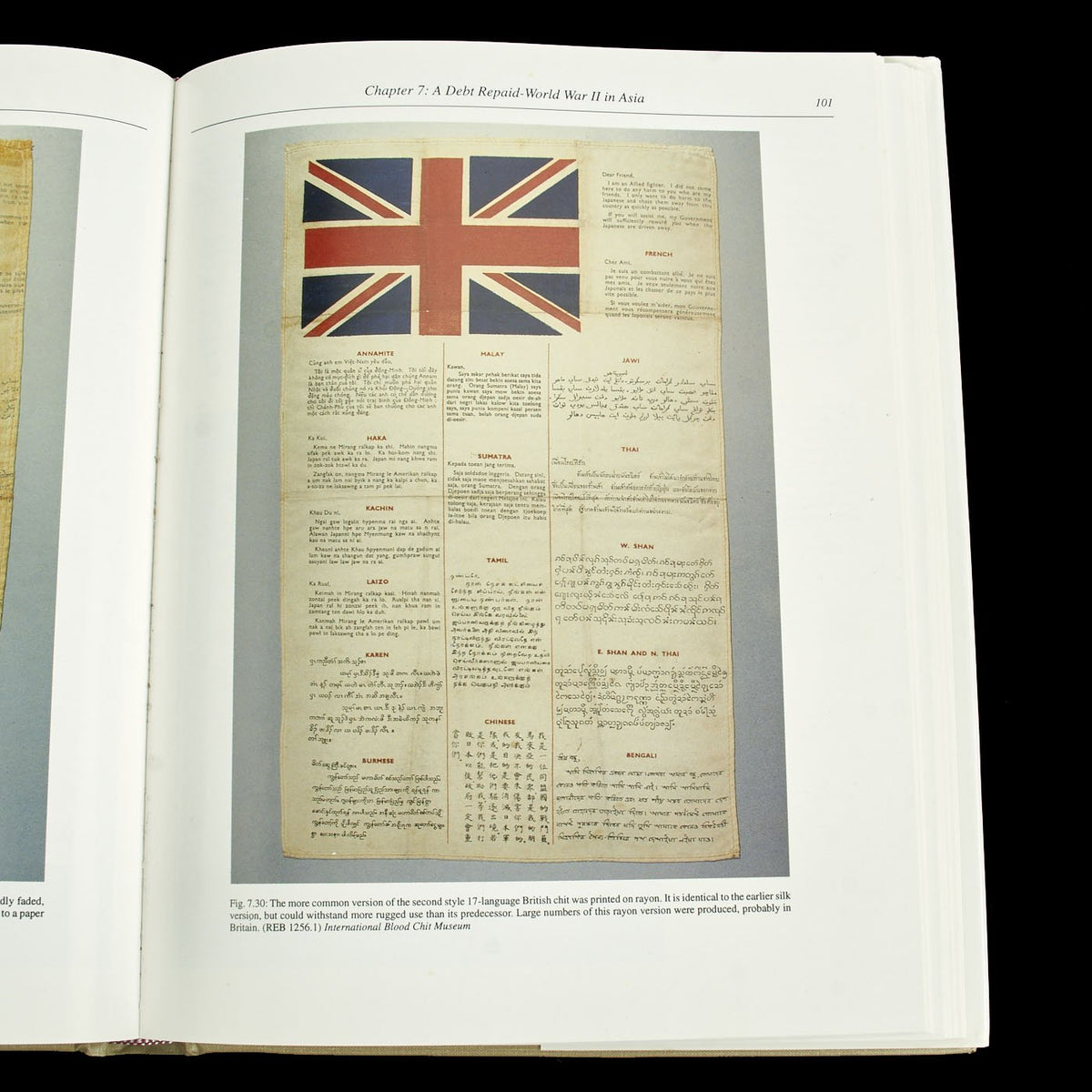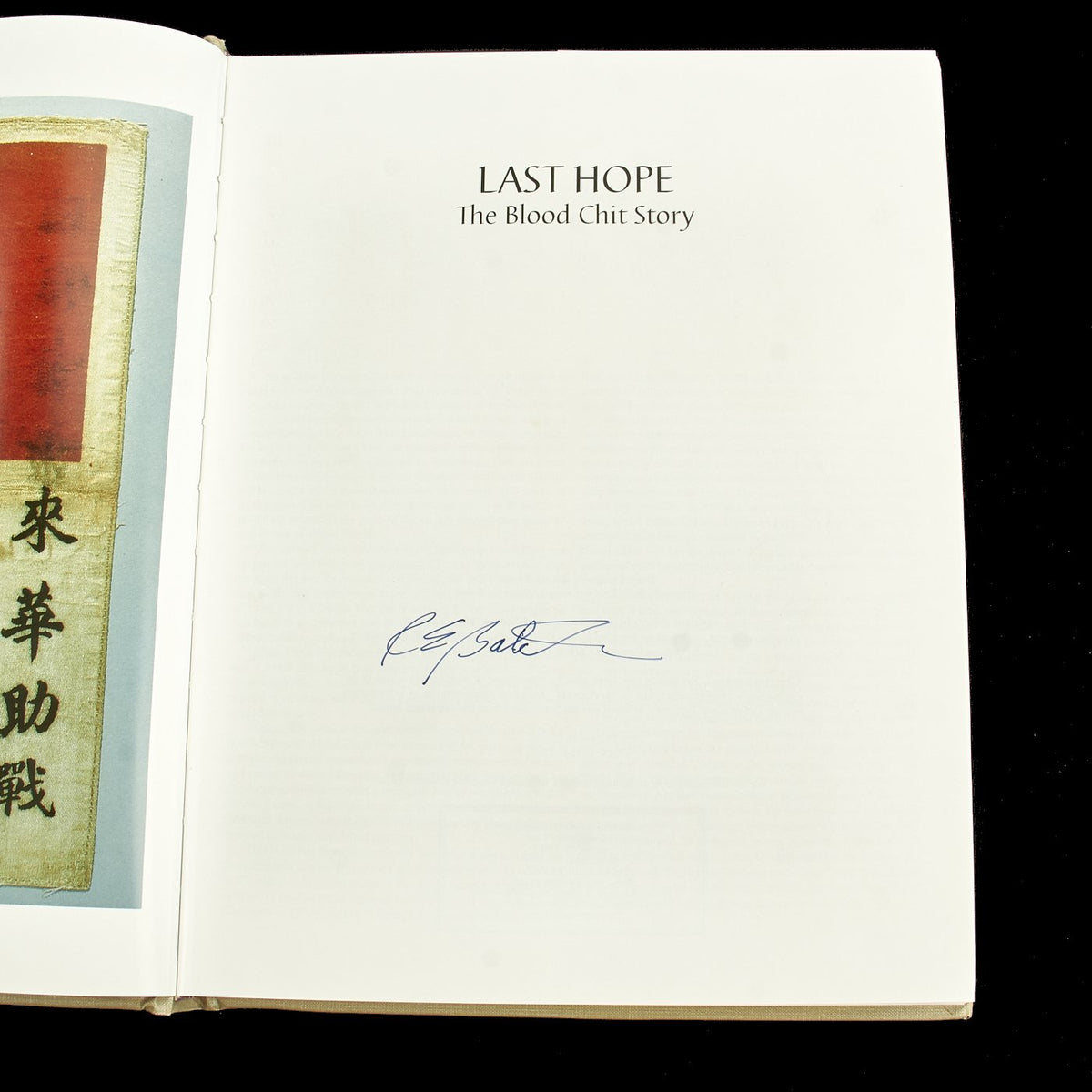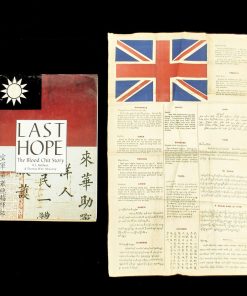Original British WWII RAF and SOE (Special Operations Executive) 17 Language Blood Chit- 2nd Style – First Type Featured in Book Last Hope Original Items
$ 695,00 $ 208,50
Original Item: Only One Available. This very blood chit is featured on page 101 of the excellent book Last Hope: The Blood Chit Story by Thomas Wm. McGarry and R.E. Baldwin (title page is signed by R.E. Baldwin). It is a Rare and beautiful WWII RAF Royal Air Force & SOE (Special Operations Executive), 17 language Blood Chit for operations in the Pacific / Asia Theater. This example is a 2nd style, First Type. The top of the blood chit shows a British flag and to the viewer’s right it reads: “Dear Friend, I am an allied fighter. I did not come here to do any harm to you who are my friends. I only want to do harm to the Japanese and chase them away from this country as quickly as possible. If you will assist me, my Government will sufficiently reward you when the Japanese are driven away.” The other languages featured on the chit are French, Annamite, Malay, Jawi, Haka, Sumatra, Thai, Kachin, Tamil, W. Shan, Laizo, Karen, E. Shan and N. Thai, Burmese, Chinese, and Bengali.
Printed silk and measures approximately 11-7/8″ x 20-3/8″ and is offered in excellent condition.
A blood chit is a notice carried by military personnel and addressed to any civilians who may come across an armed-services member – such as a shot-down pilot – in difficulties. As well as identifying the force to which the bearer belongs as friendly, the notice displays a message requesting that the service member be rendered every assistance.
History
The idea of blood chit originates from 1793 when French balloonist Jean-Pierre Blanchard demonstrated his hot air balloon in the United States. Because he could not control the direction of the balloon, no one knew where he would land. Because Blanchard did not speak English, George Washington gave him a letter that said that all U.S. citizens were obliged to assist him to return to Philadelphia.
In World War I, British Royal Flying Corps pilots in India and Mesopotamia carried a “goolie chit” printed in four local languages that promised a reward to anyone who would bring an unharmed British aviator back to British lines. The British officer John Masters recorded in his autobiography that Pathan women in the North-West Frontier Province (1901–1955) of British India (now modern day Pakistan) during the Anglo-Afghan Wars would behead and castrate non Muslim soldiers who were captured, like British and Sikhs.
In the Second Sino-Japanese War prior to World War II, foreign volunteer pilots of Flying Tigers carried notices printed in Chinese that informed the locals that this foreign pilot was fighting for China and they were obliged to help them. A text from one such blood chit translates as follows:
I am an American airman. My plane is destroyed. I cannot speak your language. I am an enemy of the Japanese. Please give me food and take me to the nearest Allied military post. You will be rewarded.
United States Armed Forces
When the U.S. officially entered World War II in December 1941, flight crew survival kits included blood chits printed in 50 different languages that sported an American flag and promised a reward for a safe return of a pilot. The kit might also include gifts like gold coins, maps or sewing needles. Many U.S. flight crews that flew over Asia had their “blood chit” sewn to the back of their flight jackets. Some units added the blood chit to the crew’s flight suits while other units gave the blood chit out only for specific flights.
Fast Shipping with Professional Packaging
Thanks to our longstanding association with UPS FedEx DHL, and other major international carriers, we are able to provide a range of shipping options. Our warehouse staff is expertly trained and will wrap your products according to our exact and precise specifications. Prior to shipping, your goods will be thoroughly examined and securely secured. We ship to thousands clients each day across multiple countries. This shows how we're dedicated to be the largest retailer on the internet. Warehouses and distribution centres can be located throughout Europe as well as the USA.
Note: Orders with more than one item will be assigned a processing date depending on the item.
Before shipping before shipping, we'll conduct a thorough inspection of the items you have ordered. Today, the majority of orders will be delivered within 48 hours. The delivery time will be between 3-7 days.
Returns
The stock is dynamic and we cannot completely manage it because multiple stakeholders are involved, including our factory and warehouse. So the actual stock may alter at any time. It's possible that you may not receive your order once the order has been made.
Our policy is valid for a period of 30 days. If you don't receive the product within 30 days, we are not able to issue a refund or an exchange.
You can only return an item if it is unused and in the same state as the day you received it. You must have the item in its original packaging.
Related products
Uncategorized
Uncategorized
Armored Burgonet Helmet & Polearm from Scottish Castle Leith Hall Circa 1700 Original Items
Uncategorized
Uncategorized
Uncategorized
Uncategorized
Uncategorized
Uncategorized
Uncategorized
Australian WWII Owen MK1 Machine Carbine SMG Custom Fabricated Replica with Sling Original Items
Uncategorized
Uncategorized
Band of Brothers ORIGINAL GERMAN WWII Le. F.H. 18 10.5cm ARTILLERY PIECE Original Items
Uncategorized
Uncategorized
Uncategorized
Uncategorized
Uncategorized
Uncategorized
